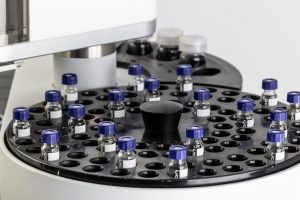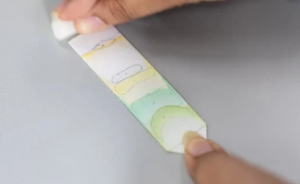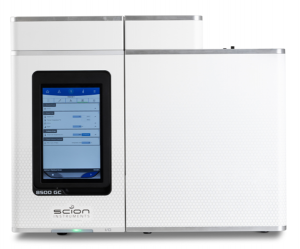Chromatography Explained | Definition, Uses and Types
What is Chromatography?
Chromatography is an analytical technique used to separate the components, or solutes, within a mixture. First, the mixture gets dissolved in or mixed with a mobile phase (gas or liquid), which is a going to move or flow through the system. This mobile phase carries the mixture through to a second substance, the stationary phase which can be highly customised to optimise the separation. As the mixture progresses, its components disperse and separate at varying speeds depending on their interaction with the stationary phase and mobile phase.

In some standard chromatography applications larger molecules move slower (as they interact more with the stationary phase), whereas the smaller ones move faster (as they have less interaction). This separation can result in the creation of distinct colour bands on the stationary material (if the individual components have a colour), hence the name ‘chromatography, derived from the Greek words ‘writing colour’.1
The History of Chromatography
The credit for the discovery of chromatography is commonly attributed to Russian botanist Mikhail S. Tsvet, who in 1901 detected the physio chemical foundations of separation.2 He systematically applied this understanding to the separation of plant pigments, specifically targeting chlorophylls and carotenoids.

Initially, it is believed that chromatography found use among artists, colour theorists, and artisans striving to refine industrial textile dyes. 3 By harnessing the principles of this technique, chemists in the mid-20th century pioneered the development of modern chromatographic processes, effectively separating the chemical components within mixtures. Today, scientists employ four key types of chromatography: gas chromatography, high-performance liquid chromatography, paper chromatography, and thin-layer chromatography.
What is a Chromatogram?
A chromatogram refers to the electronic file or physical printout that showcases the results of a chromatography procedure in a graphical format (with a detector signal plotted against the time at which it was collected), covering the information produced during the run.
Uses of Chromatography
Chromatography has multiple used in a wide range of fields:
- Biochemical research:
- Used to separate and identify the chemical components in biological samples
- Petroleum Industry
- Used to analyse the intricate mixtures of hydrocarbons present in petroleum.
- Forensic Science
- Used to test sample collected from crime scenes.
- Pollution Monitoring
- Used to detect contaminants and unknown pollutants in air and water samples.
- Bioanalytic
- Used for the quality control of drugs.
- Chemistry
- Used to study the individual components within a chemical mixture, such as the purity of reaction products to facilitate a deeper understanding of the reaction process and how it can be optimised.
Types of Chromatography
Today, chromatography comprises of four types: liquid, gas, paper and thin layer.
- Gas Chromatography (GC)
- Find out more about gas chromatography here.
- High Performance Liquid Chromatography (HPLC)
- Find out more about HPLC here.
- Paper Chromatography
- Considered one of the most basic types of chromatography methods, paper chromatography is often used when studying mixtures pigments. As evident from this name the stationary phase and separation in this method takes place on a sheet of paper.
- Thin-Layer Chromatography
- Thin layer chromatography is performed on a thin glass plate lined with gel.
SCION Instruments Chromatography

At SCION Instruments we specialise in Gas and Liquid Chromatography. Explore both our gas chromatography and liquid chromatography solutions today.
References
- https://www.chromatographytoday.com/news/gc-mdgc/32/breaking-news/why-is-chromatography-called-chromatography/31178
- http://scihi.org/mikhail-tsvet-chromatography/#:~:text=The%20Invention%20of%20Cromatography&text=%5B2%5D%20Mikhail%20Tsvet%20invented%20chromatography,ether%20as%20the%20mobile%20phase.
- https://www.chromatographytoday.com/news/hplc-uhplc/31/breaking-news/uncovering-artrsquos-mysteries-with-chromatography/33105
